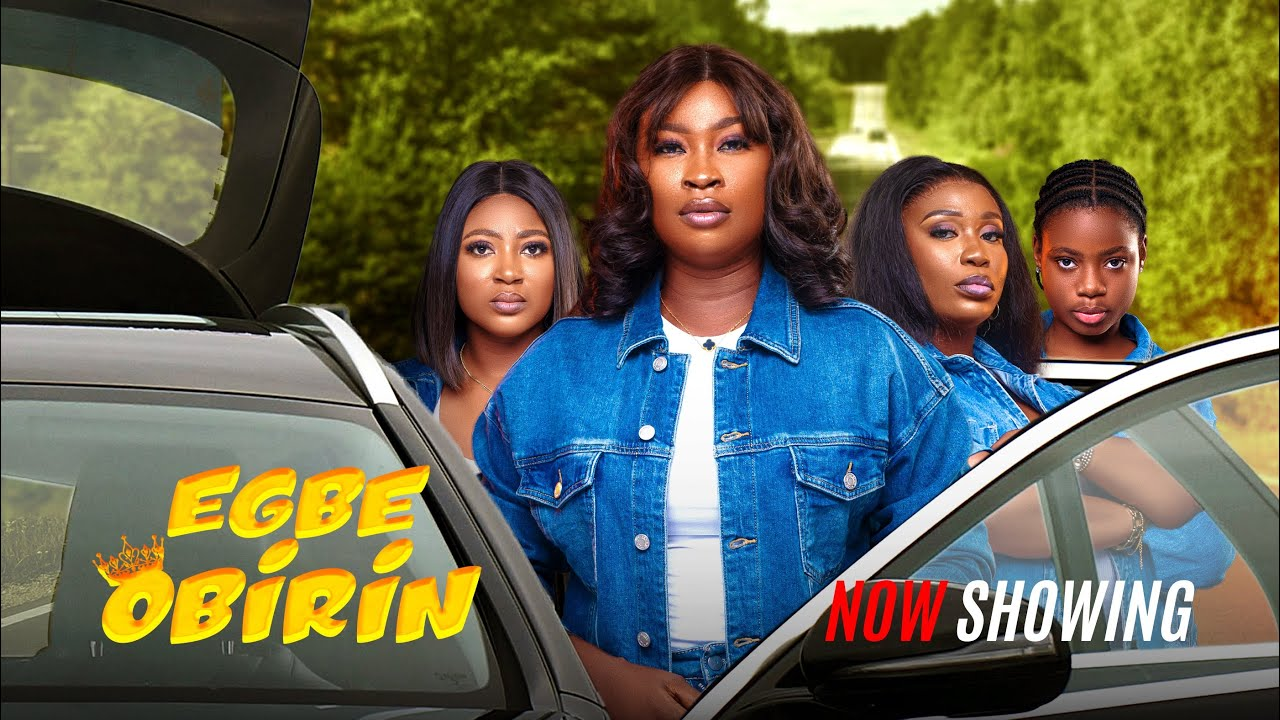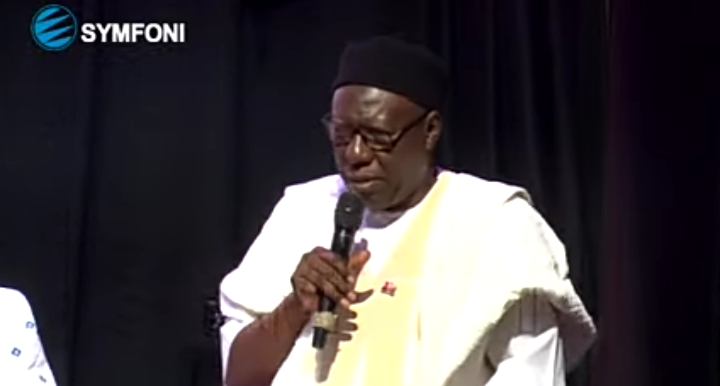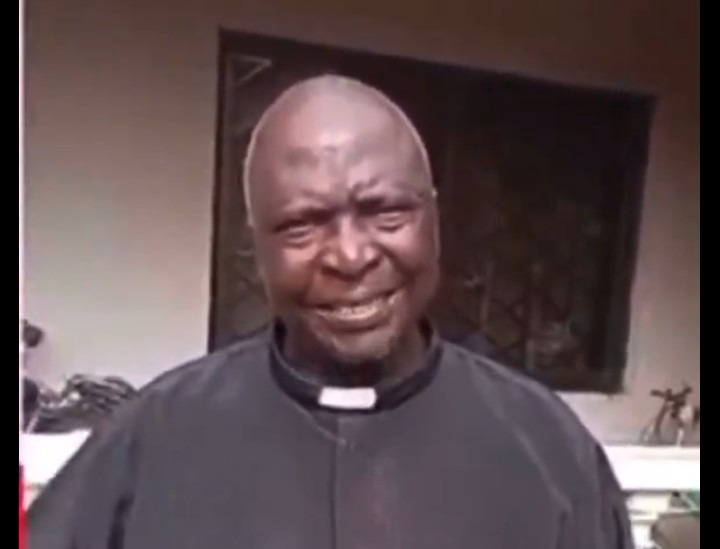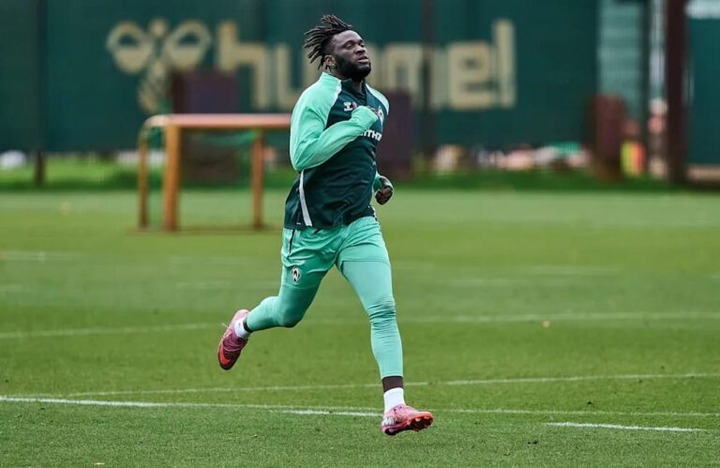Occultist Wives & Buried Secrets: A Critical Deconstruction of the 2025 Yoruba Nollywood Thriller, Egbe Obinrin
Every generation of cinema finds its voice by holding a mirror to society’s fears and desires. In the latest wave of Yoruba Nollywood, that mirror is polished to a terrifying sheen in Egbe Obinrin, a sprawling, ambitious thriller that uses the language of female solidarity to mask a deep, systemic, and supernatural corruption. More than just a cautionary tale, this film, featuring powerful performances from Anike Ami, Damilola Oni, and others, is a sprawling, 2 hour 24 minute dissection of ambition, marital resentment, and the spiritual cost of unchecked power.
Egbe Obinrin, meaning “Women’s Group,” promises financial independence and a fight for women’s rights. But beneath the veneer of cocktail parties and corporate jargon lies a chilling reality: a sophisticated network of women systematically killing their husbands and burying them in the custom-built cinema house of their palatial mansion. The film doesn’t just ask if women can be villains; it asks what kind of hell must be unleashed for them to become mass murderers and ritualists.
Is the film’s reach worth its grasp? Let’s dive deep into one of the most polarizing releases in recent Nigerian cinema.
Part I: The Thematic Tightrope – Narrative and Resonance
The Seduction of Matriarchal Power: Subverting Empowerment
The core genius—and most disturbing aspect—of Egbe Obinrin lies in its masterful, if chilling, manipulation of the modern narrative of female empowerment. The film initially presents itself as a response to perceived patriarchal oppression: women seeking “stronger economic power” to stand up for their rights. This thematic setup gives the early scenes a potent, relatable energy.
However, the narrative quickly shifts, showcasing how this drive for independence is not just corrupted but subverted entirely through occultism. The wealth—the multi-bedroom mansion, the luxury cars—is presented not as the fruit of honest labor but as a contract with dark forces facilitated by a gruesome ritual in the “dark room.” The script effectively argues that these women have simply traded one form of servitude (to a husband) for a far more sinister one (to a power source requiring human sacrifice).
The film successfully taps into cultural anxieties surrounding sudden, unexplained wealth and the increasing pressure on marital relationships. When members discuss their husbands’ perceived inadequacy, the film initially garners sympathy, only to pull the rug out from under the audience when the methods of “solving” the problem are revealed. It forces a difficult conversation: is the film critiquing women’s agency, or is it merely demonstrating the timeless moral that power, regardless of who wields it, corrupts absolutely? The script is at its best when it allows this ambiguity to simmer.
Pacing and the Lengthy Reveal: Did 144 Minutes Work?
At 2 hours and 24 minutes, Egbe Obinrin demands commitment, and its pacing is deliberately uneven. The first act is a slow burn, focusing on domestic frustrations and the alluring recruitment process. This meticulous world-building is essential for establishing the psychological trap the women fall into.
The script wisely structures its major reveals across three acts:
Act I (The Lure): Establishes the organization’s facade and its superficial benefits.
Act II (The Confession): The introduction of the police procedural, Inspector Janet, and the gradual realization by new members (like Farian) that something is terribly wrong.
Act III (The Horror): The devastating, cathartic reveal—the 40 ghosts buried in the cinema room—which serves as a spectacular payoff.
While some domestic scenes feel overlong, the meticulous lead-up justifies the sheer shock of the climax. The film doesn’t just tell us the organization is evil; it makes us feel the weight of every lie and every betrayal.
On the downside, the dialogue occasionally leans too heavily on exposition, particularly in the later police scenes, where Inspector Janet and her partner explicitly summarize the three-phase plan of murder. While this clarifies the plot for the viewer, a more subtle approach—allowing the horrifying architecture of the crime to be inferred—would have heightened the suspense further.
Part II: The Technical Execution – Opulence and Atmosphere
Visualizing Vices: Opulence and Occult
Egbe Obinrin is a triumph of set design as a narrative device. The contrast between the organization’s two primary locations—the dazzling, contemporary mansion and the austere, deeply unsettling “dark room” where rituals are performed—is the film’s greatest visual strength.
The mansion is not just a house; it’s a symbol of their compromised success. Its expansive cinema room, swimming pool, and lavish furnishings are shot with an almost aspirational gloss, making the ultimate reveal—that the very foundation of their luxury is literally built upon the graves of their victims—brutally effective. The visual language successfully links material gain directly to spiritual decay.
Conversely, the cinematography for the secret meeting and the dark room utilizes low light, deep shadows, and stark framing, immediately signaling the switch from social drama to occult thriller. The director intelligently uses this visual dissonance to maintain the audience’s discomfort, ensuring that the luxury never feels comfortable or earned.
Score and the Supernatural Pulse
The sound design and musical score are crucial in carrying the film’s supernatural edge. The score is used sparingly but effectively, relying heavily on tension-building cues rather than constant, distracting melodrama. When the ghosts of the buried men are invoked, the soundscape shifts from the urban hum of Lagos society to a chilling, primal rhythm.
However, the editing, while strong in key sequences, occasionally suffers from the standard Nollywood issue of abrupt scene cuts, particularly during moments of high-stakes confrontation. The climactic police confrontation between Janet and IMAX, while powerful, could have benefited from tighter, more controlled editing to fully maximize the physical and emotional impact of the final face-off. Despite these minor flaws, the direction maintains a clear, consistent tone that successfully bridges the gap between domestic tragedy and spiritual horror.
Part III: Queens and Conspirators – Performance Analysis
The Chilling Charisma of IMAX
The entire film rests on the shoulders of the actress playing Imayel Abik Alexandra, aka IMAX, the founder. Her performance is the definition of chilling charisma. She must embody both the polished, motivational speaker who preaches liberation and the cold-blooded puppeteer who orchestrates murder. The actress navigates this duality with unsettling ease.
In her boardroom scenes, she exudes an almost magnetic authority, commanding obedience from her followers and justifying their heinous acts with twisted logic. Her delivery is measured, making her pronouncements all the more terrifying. The performance ensures that IMAX is not a cartoon villain but a genuinely seductive figure—a prerequisite for believable cult leadership.
When the mask finally drops during the confrontation with Inspector Janet, the actor delivers a masterclass in controlled, yet maniacal, desperation. The reveal that she is Janet’s mother, who faked her death and sold her soul, is a trope, but her committed performance sells the emotional weight of this impossible parent-child relationship.
The Investigator’s Emotional Burden
Damilola Oni, as Inspector Janet Olbecki, carries the police procedural thread with a necessary blend of street smarts and emotional vulnerability. Her character serves as the audience surrogate, the skeptical outsider forced to confront a reality that defies logic. The dynamic between Janet and her partner (the skeptical male cop) is well-handled, reinforcing her credibility before the fantastical plot elements kick in.
The emotional climax—where she learns her mother is the monster she hunts—is highly demanding. The actress manages to convey shock, rage, and profound familial grief simultaneously. While some of the supporting members of Egbe Obinrin occasionally lean into theatricality, the central conflict between Janet and IMAX is grounded by two powerful, committed performances, elevating the material beyond typical melodramatic fare.
Part IV: Cultural Impact and Final Verdict
The Cultural Discourse: A Mirror of Modern Fears
Egbe Obinrin is not subtle, but its heavy-handed approach is exactly what gives it cultural currency. It tackles the often-whispered fear in modern African society: the belief that extraordinary, often unexplained wealth, particularly among women, is tied to occult or transactional spiritual practices. By framing this through the lens of women’s liberation gone monstrously wrong, the film ignites a crucial discourse about the sacrifices made for success.
The film serves as a potent, if dark, satire on the transactional nature of certain modern relationships, where economic contribution is confused with affection, and resentment festers until it spills over into violence. It solidifies the trend of Nollywood using the supernatural thriller genre to comment directly on hyper-capitalism and moral rot. It is destined to be a talking point on social media and amongst older, more conservative audiences who will see it as a validation of their anxieties regarding the breakdown of traditional family structures.
The Verdict: A Must-Watch for the Strong of Stomach
Egbe Obinrin is a flawed masterpiece: occasionally verbose, sometimes predictable in its police procedural beats, but ultimately, a stunningly ambitious and deeply disturbing piece of filmmaking. Its technical vision is clear, its thematic subversion is brilliant, and the central performances are captivating. It takes the familiar story of occult wealth and uses it to construct a chilling horror show about the very structure of domestic life.
The sight of 40 ghosts buried beneath a symbol of modern success will linger long after the credits roll. For its audacious plot, its commitment to the occult thriller aesthetic, and the powerhouse performance of its lead villain, the film is a vital, unsettling watch.
My Rating: ……………………. (4 out of 5 Stars)
Call-to-Watch:
If you are ready for a film that will challenge your perceptions of power dynamics and keep you glued to your screen for nearly two and a half hours, then you must seek out “Egbe Obinrin”. Prepare for a long night—and maybe double-check your own cinema room.
#NollywoodTimes
#EgbeObinrin
#NollywoodThrille
#OccultWives















Leave a Reply